Dubai is limitless. Unlike everything that you imagine under a city in the Arab world. Dubai is made up of superlatives, opposites and surprises that can not be imagined bigger and more impressive. Contradictions and superlatives in terms of optical, material, cultural, architectural and urban confront the visitor and photographer at every step. You should never leave the camera in the hotel room, not because it is not safe there, but because you would surely miss fascinating motifs. To experience ten-day Dubai and to do 1,000 exciting photos is not an art, an art would be to bring less-worthy pictures home.
In 2007, I was in the metropolis of this wonderland for the first time, then in 2010 and again in 2014. It is unimaginable how rapidly the city has changed in the few years and will continue to change.
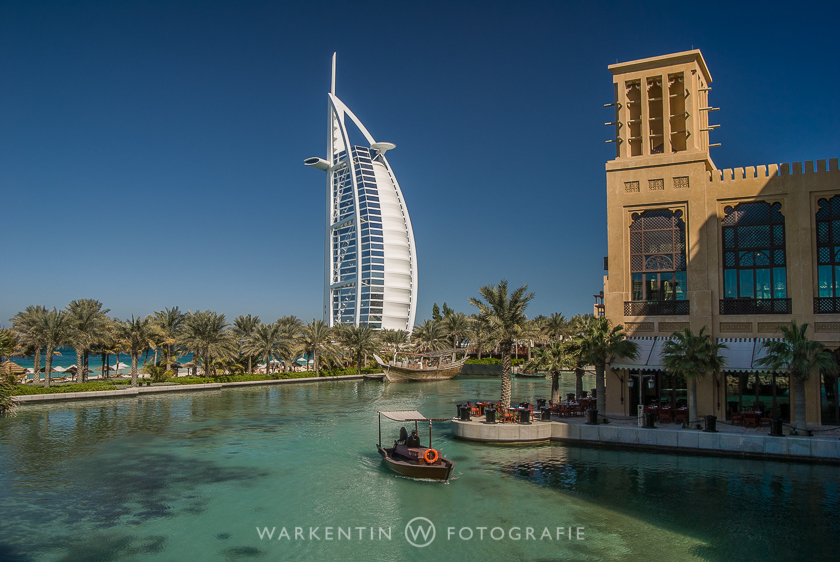
The photographic conditions are optimal, rain is almost never, cloudy sky rare. The summer is unbearably hot, however, so even the most expensive luxury hotels with discounts of at least 50% lure. If you are talking about making holiday plans for Dubai in Germany, the reaction often fluctuates between envy and respect because of the supposedly high costs for a trip to “Las Vegas of the Arab world”. Of course, you can spend far more than 3,000 € per night for a hotel room, but you can also have breakfast in one of the many mostly Indian and Pakistani cafes on the roadside: cheese sandwich and English tea with milk for 0,40 € ! And hotel rooms are also for 40-50 € for the double, of course not in a luxury hostel.
Practical tip: Of course, you need enough memory space for your Dubai trip, especially because it is very advisable to always shoot in RAW format, because the lighting and motif contrast is very high due to the clear sunlight and you get in JPEG files often eroded lights and deep black shadows without any details.
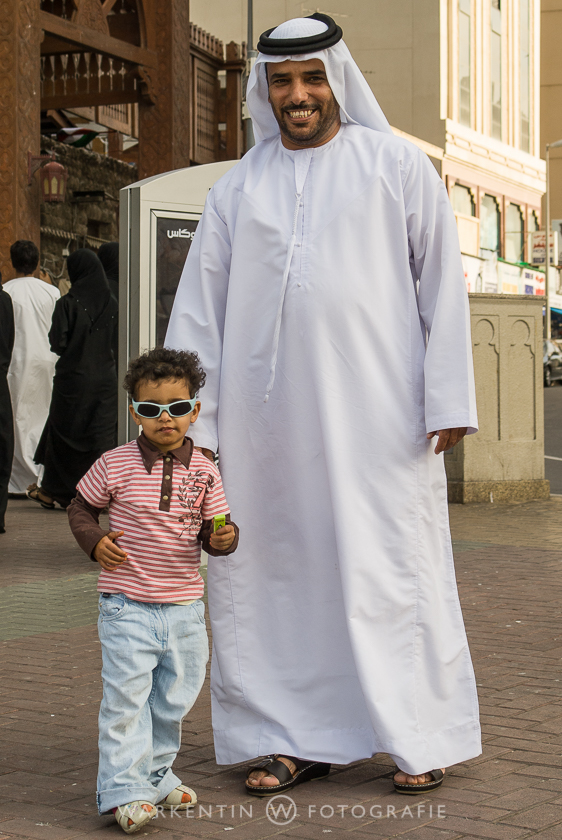
There are many topics to be found in photography. Of course, the first thing to notice is the incredible architecture of this city, which knows economic growth only in the turbo range. 35 percent of all the world’s largest construction cranes are located in Dubai, they say. It is not difficult to believe that, because of the construction boom nationwide. The Burj Al-Arab is the tallest building in the world and the highest in the world. For photographers, the Sheikh Zayed Road is an Eldorado, where you can photograph modern architecture and almost endless glass façades and the wide-angle lens can not be wide enough. My emirate host, not least proudly told me, was built over 90 high-rise buildings over the past five years on the main road from Abu Dhabi to Dubai, the Sheikh Zayed Road. All with at least 50 floors! Many more will follow.
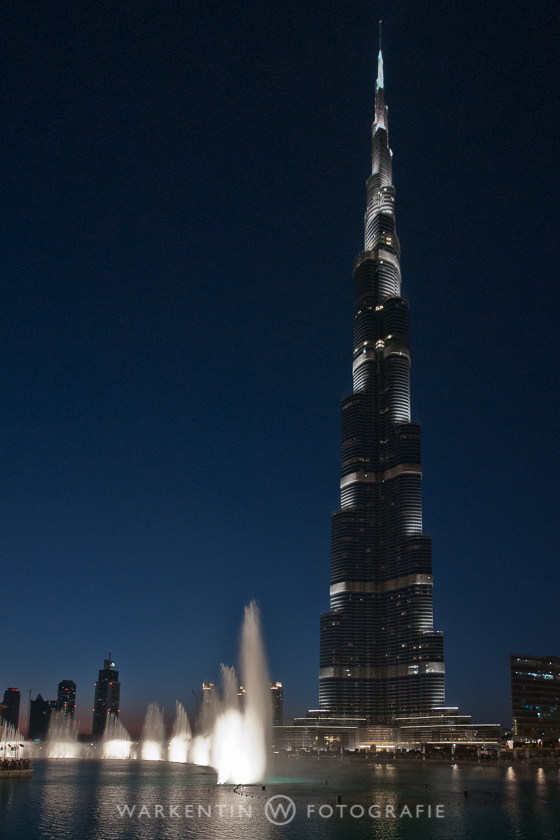
One of them, “Burj Khalifa”, the tower of Khalifa, is to be at any price the highest building in the world. It was planned years ago, at 710 meters, that the architect and the structural engineers were given the task of adding another 100 meters. Recently, the construction measures were slowed somewhat, because the structural engineers had received new instructions from the builders and again calculated a lot. Now, with a floor every five days, the goal has been reached with 828 meters high. Also the view from the approximately 450 meters high viewing platform is breathtaking. Even about photographers have been thought, on the outside terrace in airy height even left slits for the camera lenses, so that one does not have to photograph through the thick tank glass. The view in the evening and in the blue hour is brilliant, this moment you should not miss.
Practice tip: Very important if you want to shoot the skyscrapers impressively: one should take a very short focal length! 18 mm (@ 35 mm) are the minimum, 15 mm or less are optimal. In Dubai you can find lenses of the well-known third party manufacturers at reasonable prices, since there is neither the VAT, income or sales tax!
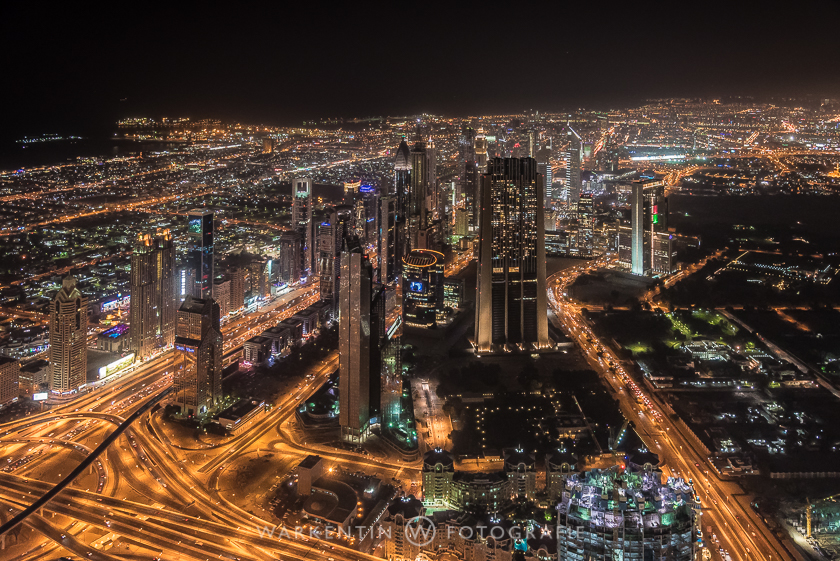
A little more contemplative is the creek, the water arm that protrudes from the Arabian Gulf into the town and can be crossed with small wooden boats, the abras, for € 0.20 per trip. On the east side of the Creek, there are less skyscrapers, but not less many photographs. Right next to the pier of the Abras, the traditional Persian dhows, teak freight ships, bring all kinds of goods to Iran or from there into the Emirates. Not only the old boats offer plenty of opportunity to take photos, but the mostly Indian or Pakistani crews again and again invites me to push the release button.
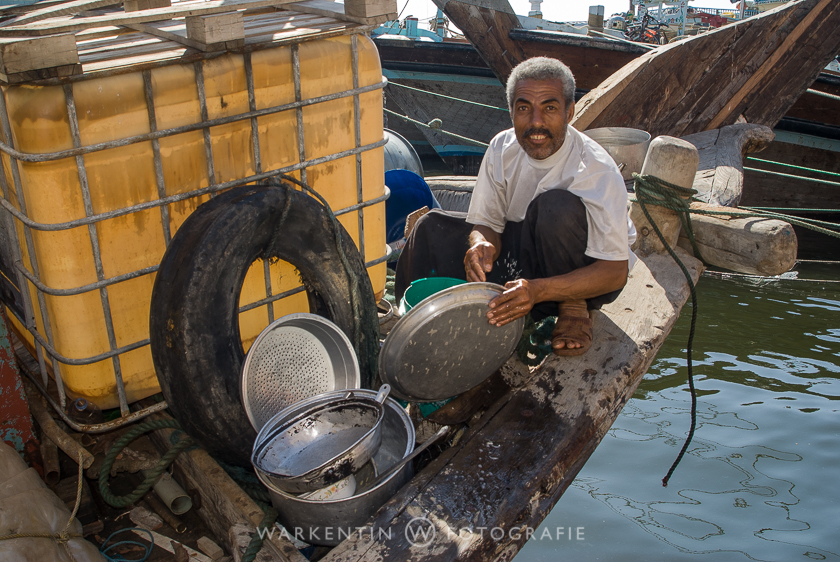
Rarely have I received a negative answer to the question of a portrait, but mostly fascinating portrait studies of friendly, foreign personalities. Many of the goods arriving from the Dhau’s from the Middle and Far East can be found on the Al Ras district, which is immediately adjacent to the port area, in the numerous souks, the markets. There is the gold souk, the spice souk, the silk souk, the food souk, but also a more remote one for cars or entertainment electronics. For buyers, the matter is very handy, as the traders of an industry are gathered in a street and find everything in a rich offer and the obvious competitiveness of course animates the business. And only very inexperienced tourists pay the first demanded price, which is, of course, completely inflated, finally you want to negotiate!
Practical tip: Even if Dubai seems to be the most liberal place in the Islamic world, one should take a very cautious approach when photographing people. Not everyone likes to be photographed and before shooting traditionally dressed Arabs they should be asked, photographing of women should be avoided.
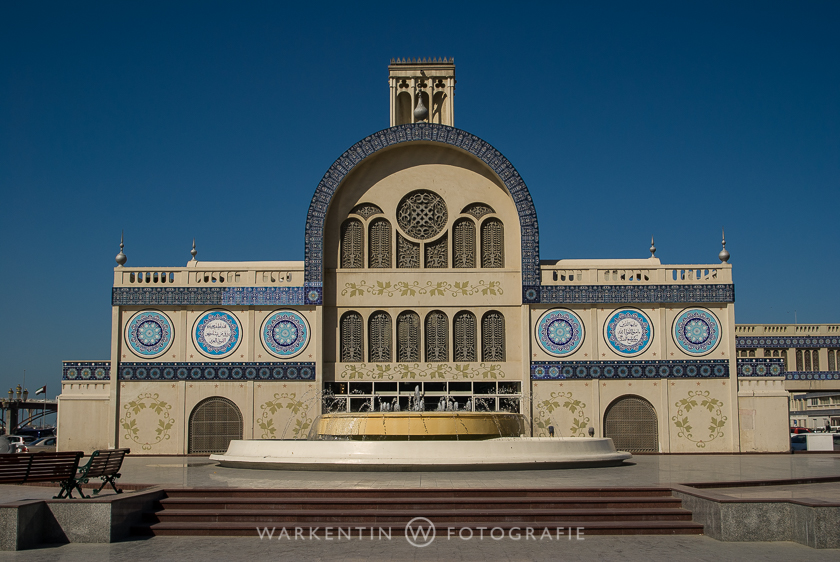
All these markets are an inexhaustible photo hunting ground, you certainly do not need to emphasize here. But do not come between 1pm and 4pm, then the souks look as if they are extinct, there is a lunch break, and there is nothing to see from the lively activity and the surplus product offer. The standard zoom with approx. 35-150 mm (@ 35 mm) is sufficient for the photo raids in the port area and the souks, but plenty of memory space should be available.

An impression of traditional life and classical Arabian architecture can only be found in the Heritage Village, the Heritage House, the Diving Village, the Dubai Museum and some other extensively but authentically restored or rebuilt buildings of the old Dubai. In the narrow, shaded alleys of the Heritage Village, you can stroll around the undisturbed life of the turbulent life and make up for some of the contemplative architectural photographs from the past and then settle down in one of the galleries, cafes or restaurants to taste date cakes and Arabic coffee to enjoy a candle-lit dinner with camelmeat.
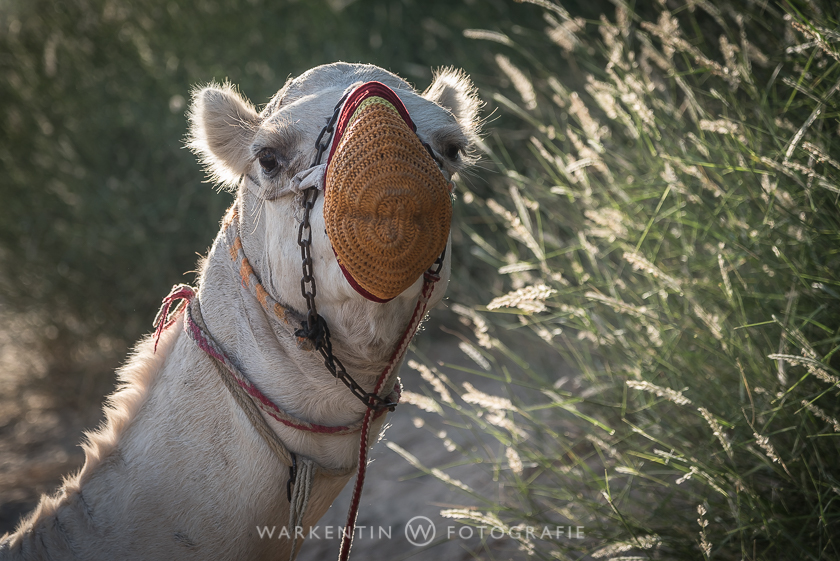
Local Weather
Further informations
United Arab Emirates (UAE) – General Informations
Dubai – General informations